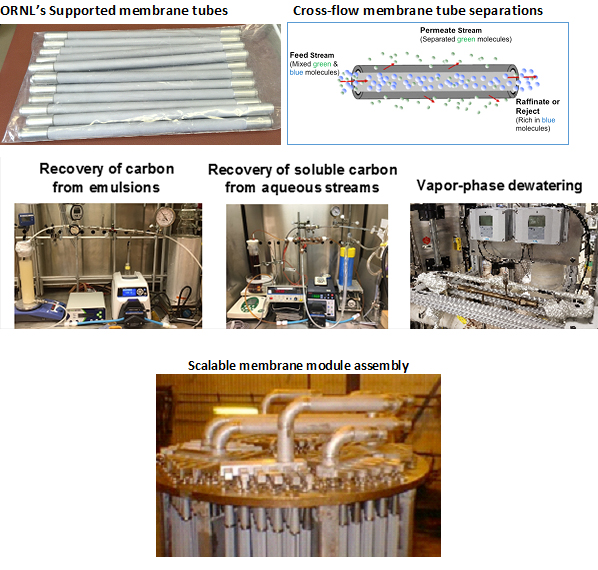| Overview |
Dynamic membranes operate by moving the membrane rapidly (using vibration or rotation) to generate a shear force at the membrane surface and the feed stream that is being filtered. This is opposed to traditional Tangential Flow Filtration (TFF) that generates a sheer force by pumping the feed solution. Pumping the feed solution at high rates is often very energy intensive. Accordingly, dynamic membranes are more energy efficient because very high sheer rates can be generated by moving the membrane and flux is proportional to sheer rate. Furthermore, dynamic membranes allow for greater flux, reduced membrane area, and often reduced CAPEX and OPEX. The BioProcessing Separations Consortium is advancing the use of dynamic membranes (both vibrational and rotary) in processing difficult to handle biorefining streams such as lignin. These membranes are being combined in unique cascades and in stand alone configuration to address biorefining challenges into the nanofiltration range. |

